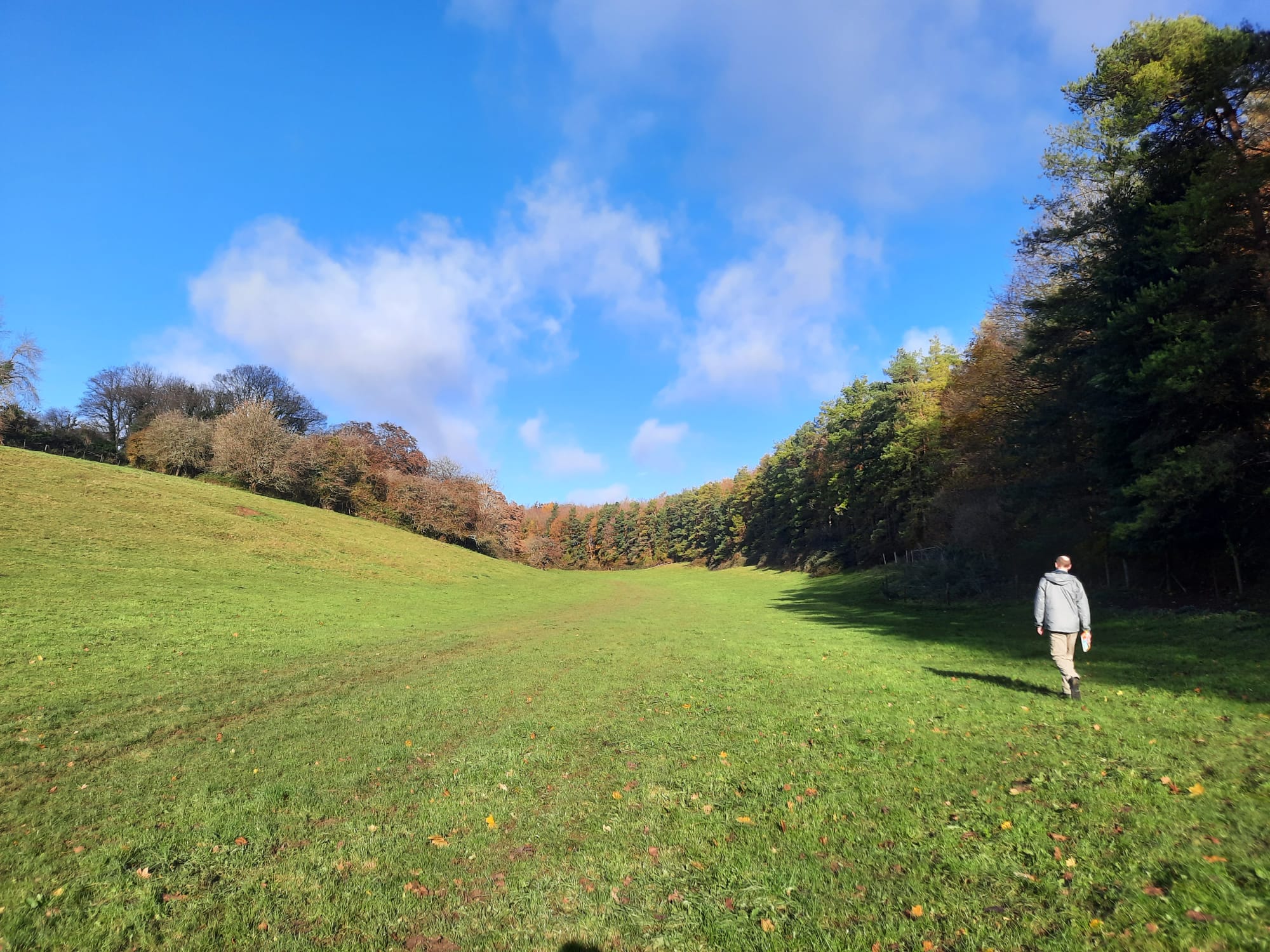A Weekend In The Cotswolds
A relaxing weekend in the rolling hills of the Cotswolds is a perfect opportunity for the Salterton Arts review to get some fresh air, visit a few tourist attractions, and learn more about heritage and culture in this Area of Outstanding Natural Beauty.
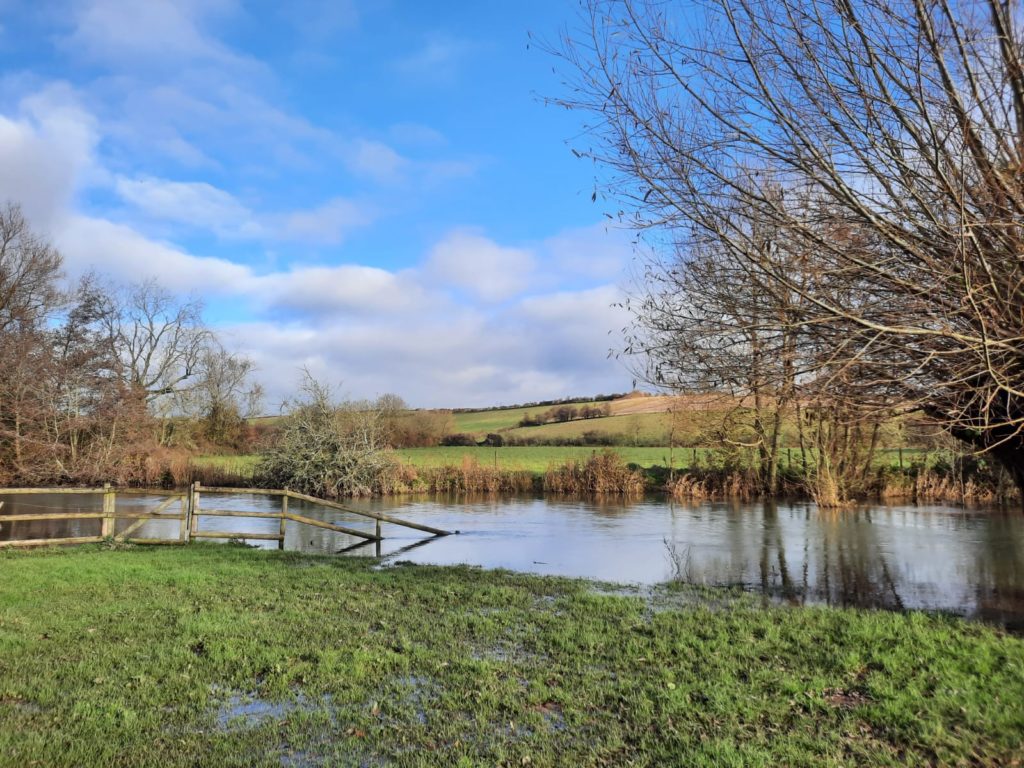
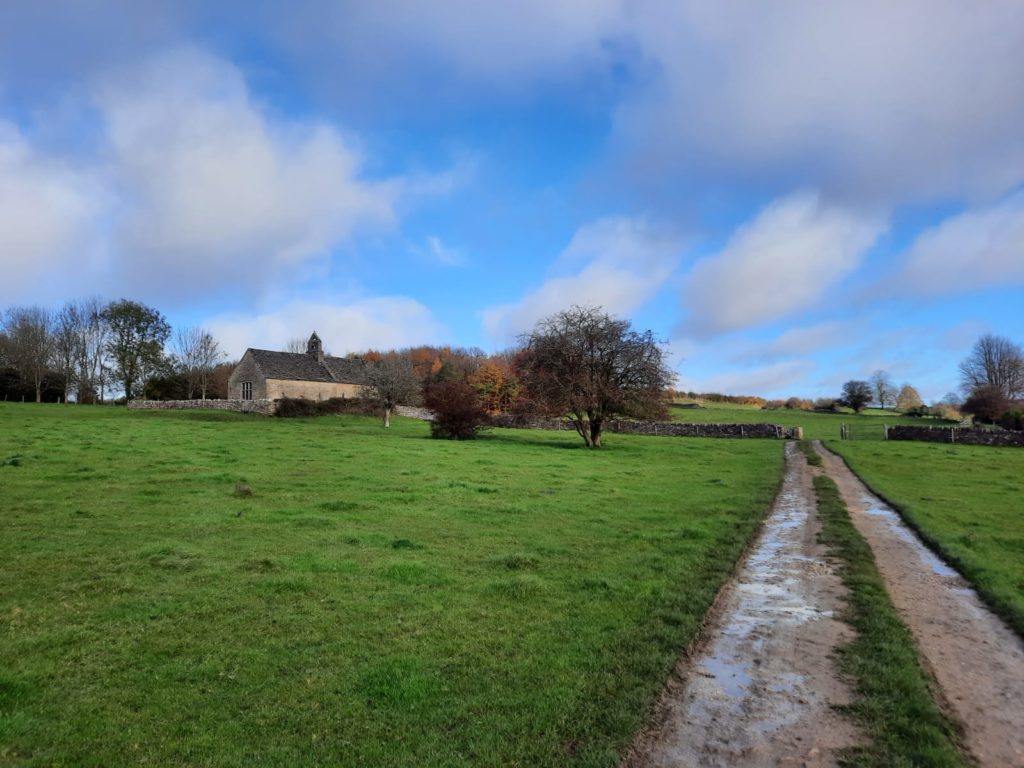
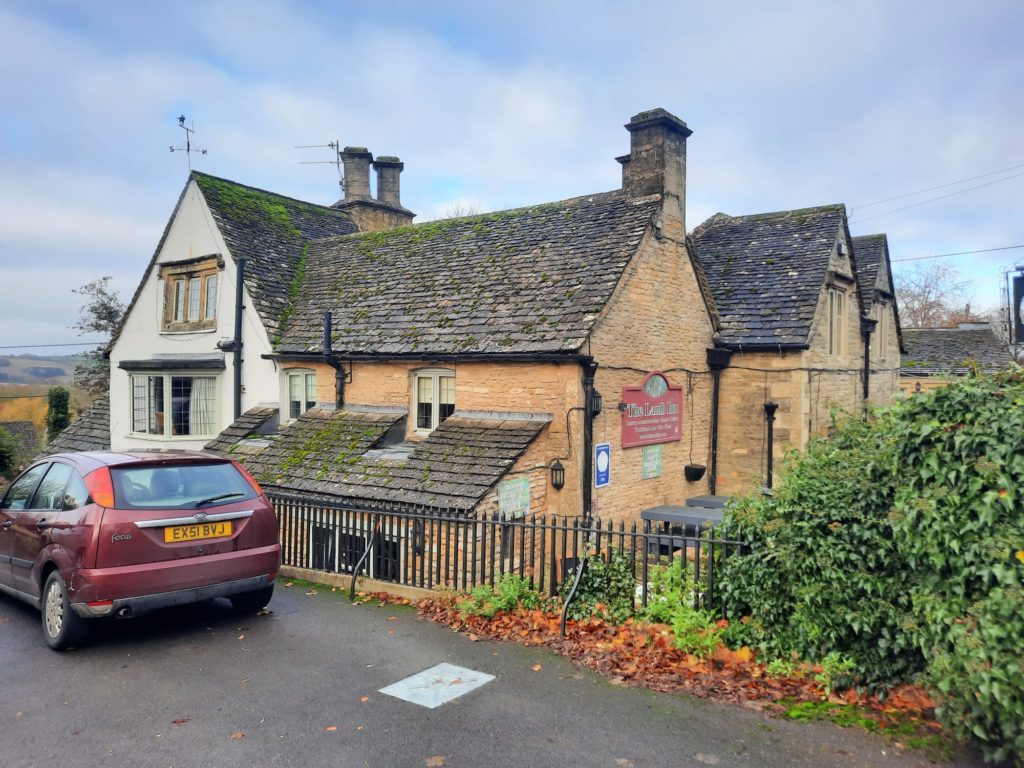
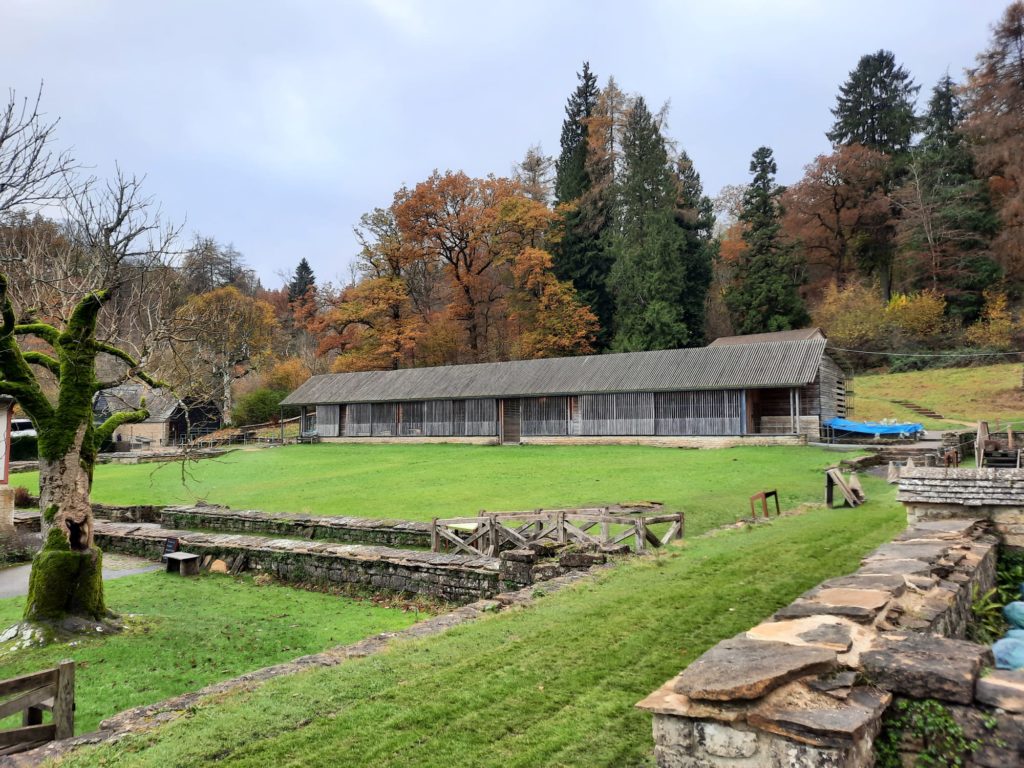
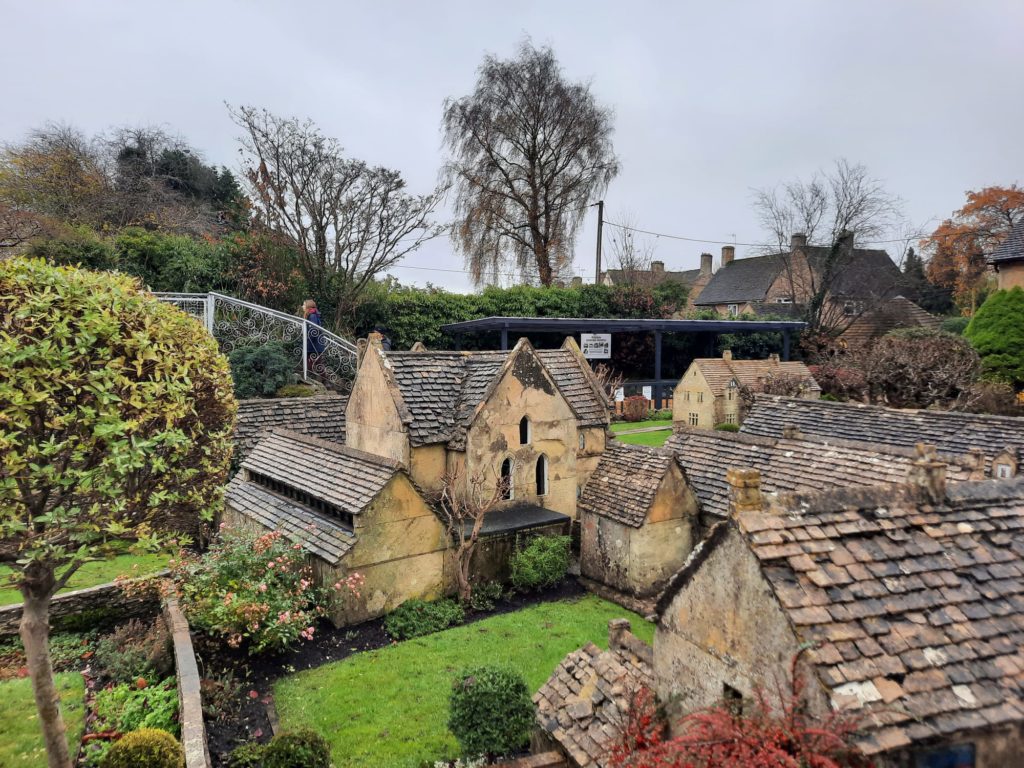
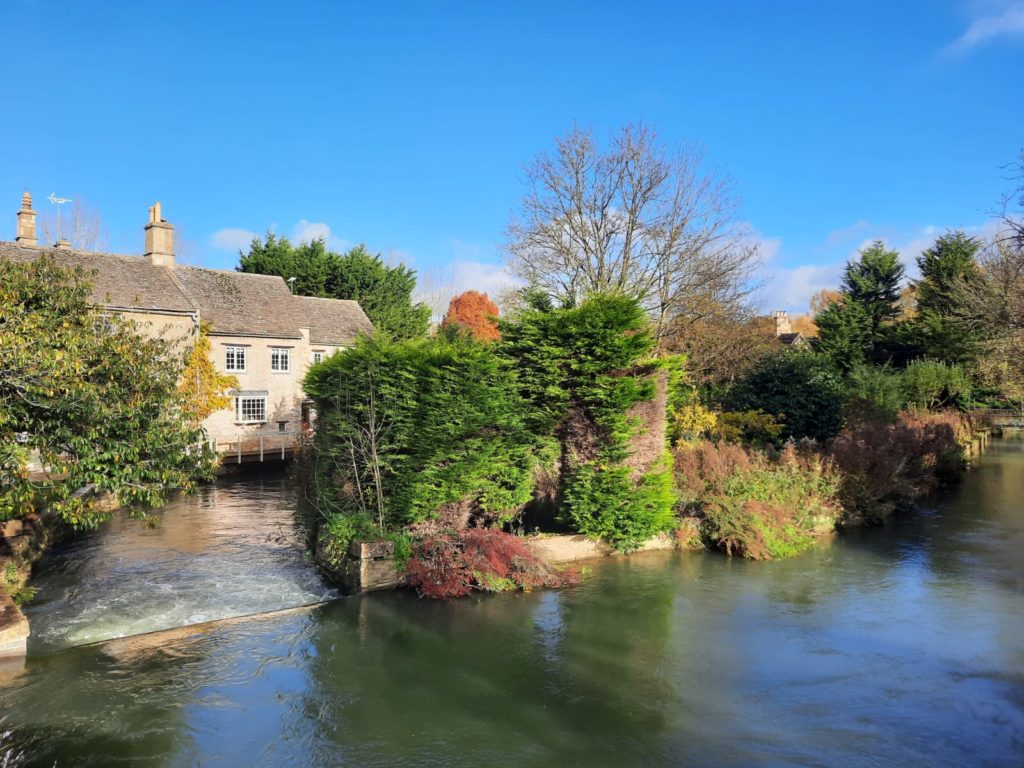
A Weekend in the Cotswolds
The Salterton Arts Review hasn’t been doing a bad job of getting out and about in England in the last 12 months. As well as all the usual London-based cultural activities, we’ve had excursions to St Albans, Winchester, and most recently Gloucester. Gloucester is within the wider Cotswolds region, but not the official Area of Outstanding Natural Beauty (AONB – like a national park). It was nonetheless our point of departure for a few days exploring what the Cotswolds have to offer.
The reason that the Cotswolds are an AONB is that their rolling limestone grasslands are a relatively rare landscape in England. The Jurassic-era limestone is a golden colour here, rich in fossils such as sea urchins. It’s not clear what the ‘Cots’ in Cotswolds means – the ‘wold’ means hill or high open land. Various crops are still grown here, as well as livestock farming. Wool brought a particularly rich period for the Cotswolds back in 1250-1350, leaving us several notable ‘wool churches‘ today.
Tourism didn’t really flourish here until the 20th century. It was then that the towns with their original stone buildings became valued for their unindustrialised charm. Tourism is a major part of the local economy, although the downside is that tourist numbers can overrun some of the more scenic towns in the high season. Further on in this post we will take a look at how that tourism has changed (or not) over the years.
Disclaimer: this isn’t any sort of comprehensive travel guide. I haven’t been everywhere in the Cotswolds – the thoughts below reflect a weekend based in Great Rissington where I visited Moreton-in-Marsh, Bourton on the Water, Burford, Cirencester, Chedworth and a few other places. So please excuse any oversights or omissions on that basis.
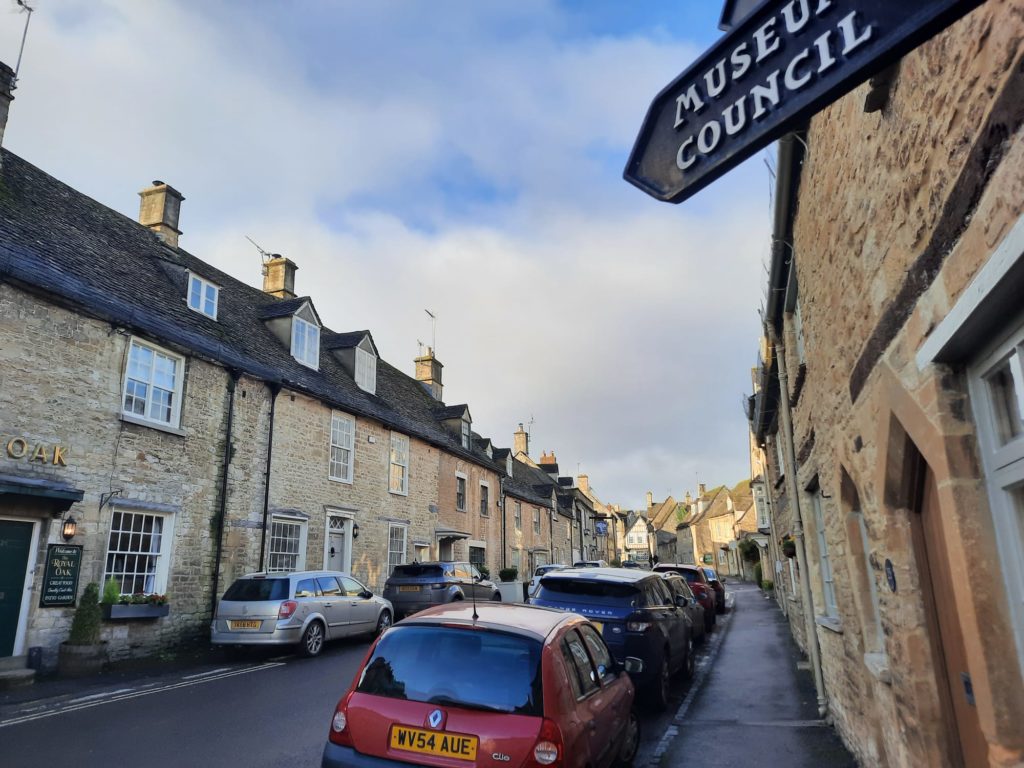
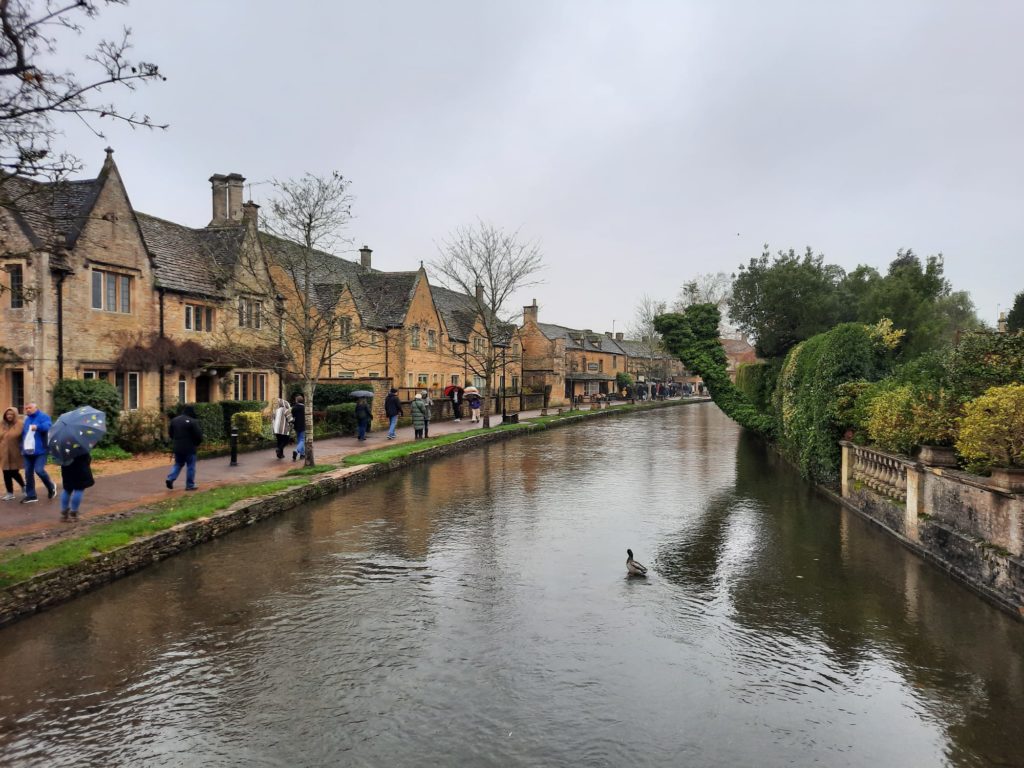
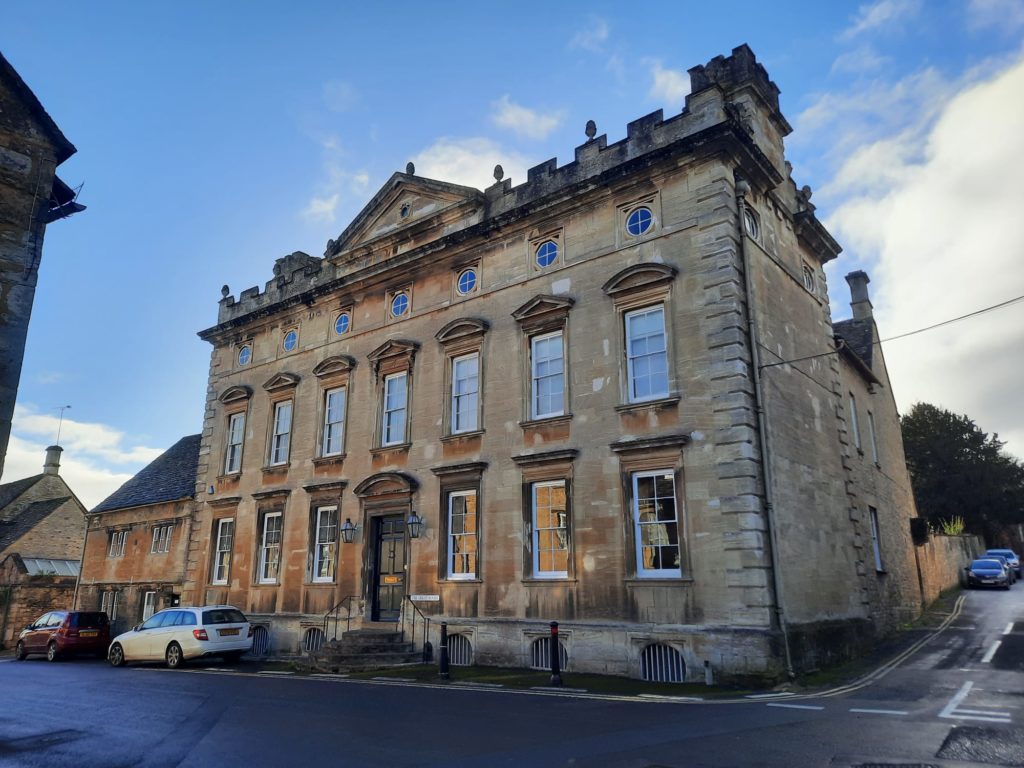
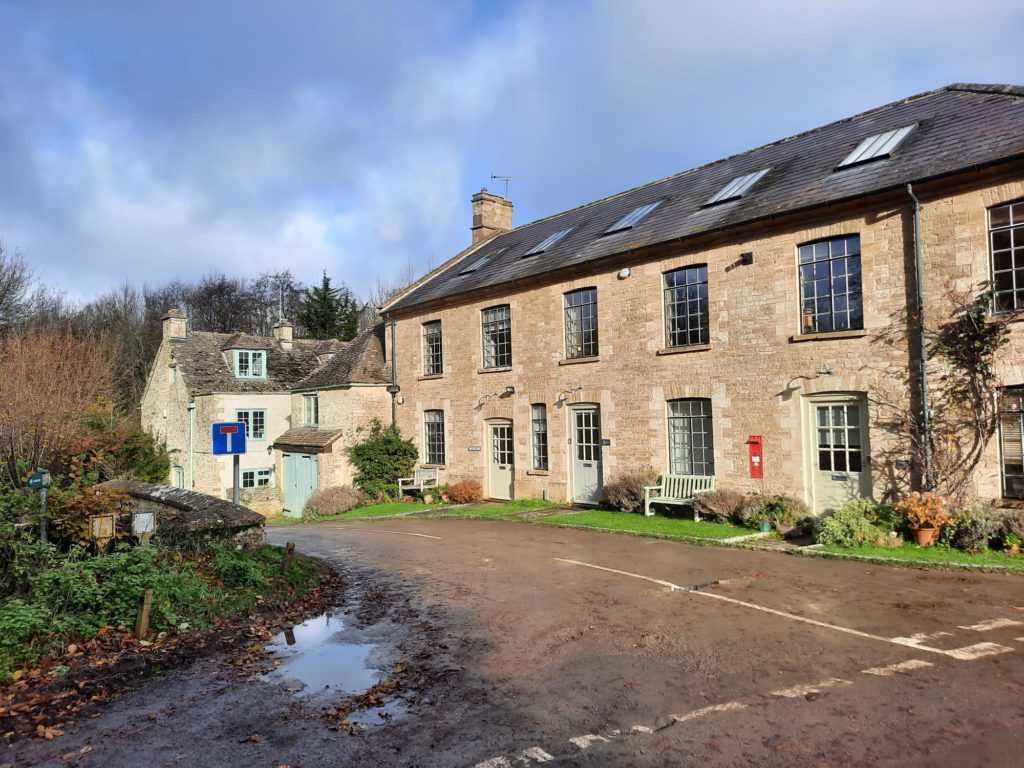
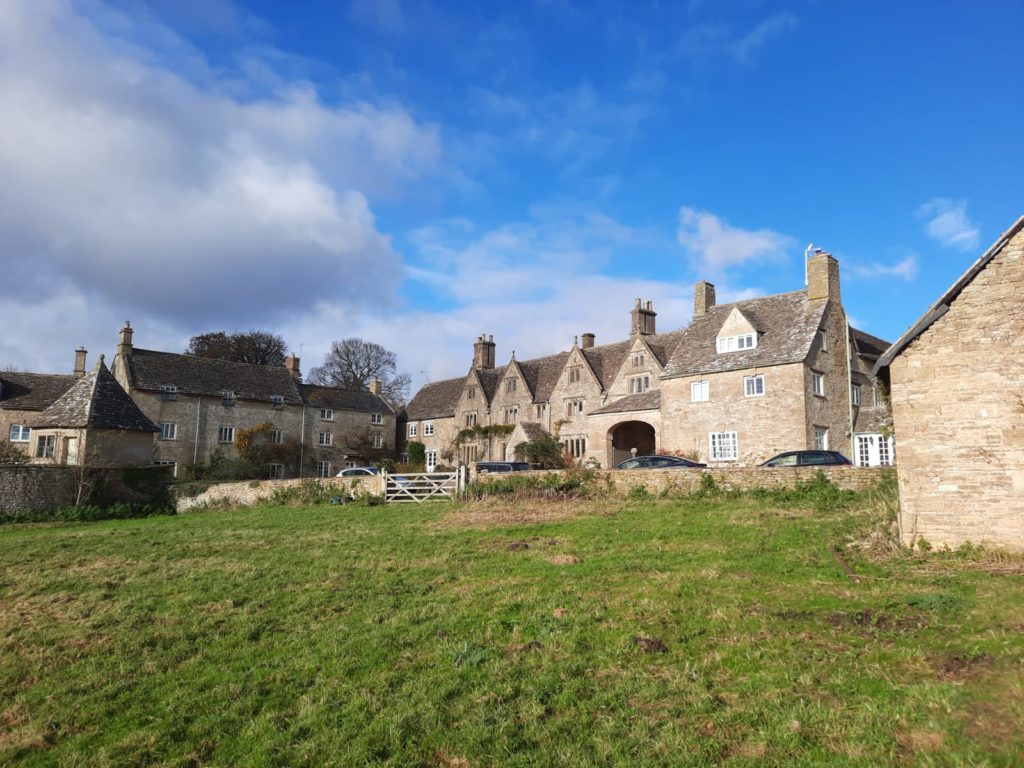
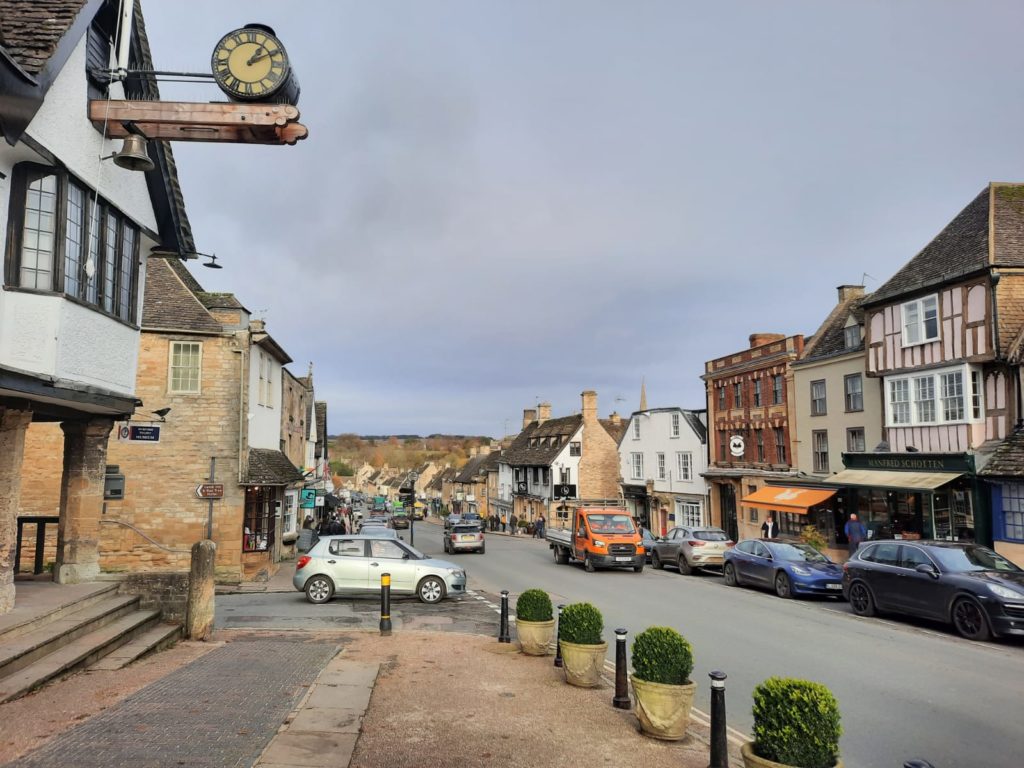
Charming Villages
The most important thing when spending a weekend in the Cotswolds is to ensure you visit a few charming villages. You’ll hardly be able to avoid them if you’re doing it right! You will need a car in order to comfortably get to them and between them, though. Or to join a tour of some kind: we saw large amounts of coach parking in some towns and villages. Which brings me to an important point: either pick your time of year wisely, or be ready for crowds. The small and intimate nature of Cotswold villages are their charm, with stone cottages along winding lanes or near babbling brooks. We did our weekend in November and it was busy enough. In the spring and summer there must be veritable plagues of tourists descending upon the poor residents.
If you’re still keen to brave it to see the charming villages, here are a few suggestions:
- Burford: certainly charming, with more antiques and homewares stores than you could shake a stick at. There are a lot of 17th-18th century houses and shops, in Cotswold stone or half-timbered. You can do interesting walks from here, perhaps stopping off in a local bakery before or after.
- Bourton on the Water: as its name suggests, is on the water. The River Windrush runs through it, with several lovely stone bridges. This seems to be one that gets busy during high season, due to the nearby tourist attractions. But these also make it a good pick for families. Not quite sure it’s the “Venice of the Cotswolds” as I’ve seen written somewhere, but it’s nice.
- Bibury: not one I visited on this weekend, but I’ve been before. This is the quintessential Cotswold village, but is so tiny you feel almost self-conscious gaping at the little cottages. Arlington Row, the main draw, was originally a wool store until it was converted into cottages for weavers working at a nearby mill.
- Other options include Chipping Campden or The Slaughters, the latter much lovelier than their name suggests. Or there are the bigger centres like Stratford upon Avon or Cirencester.
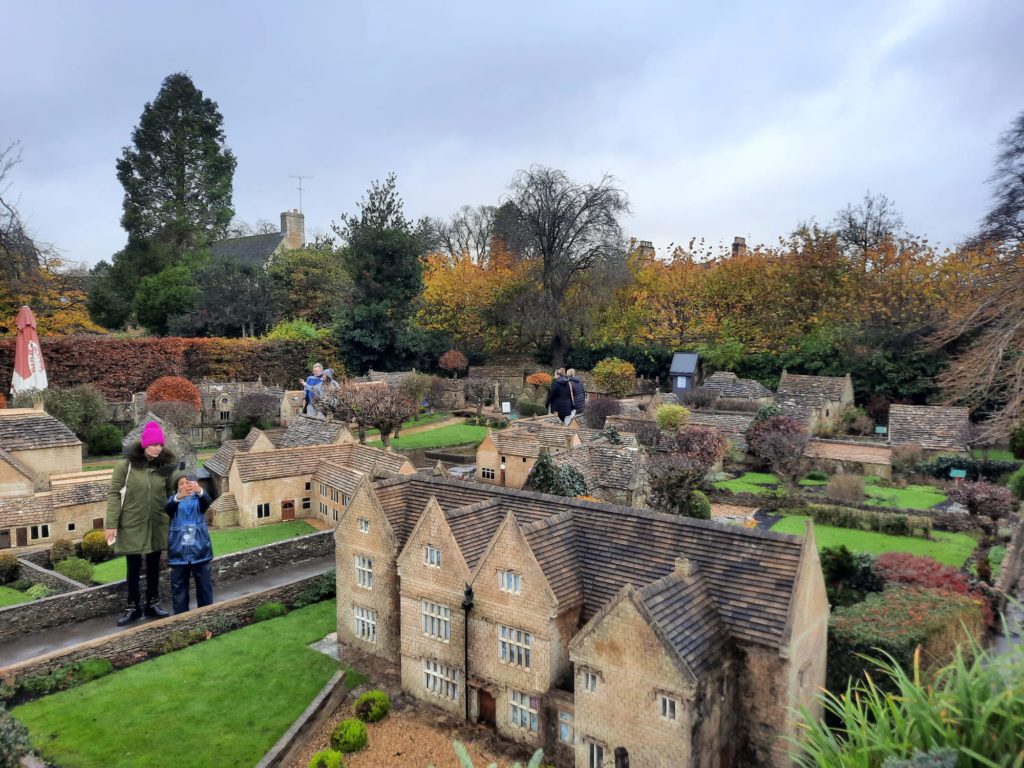
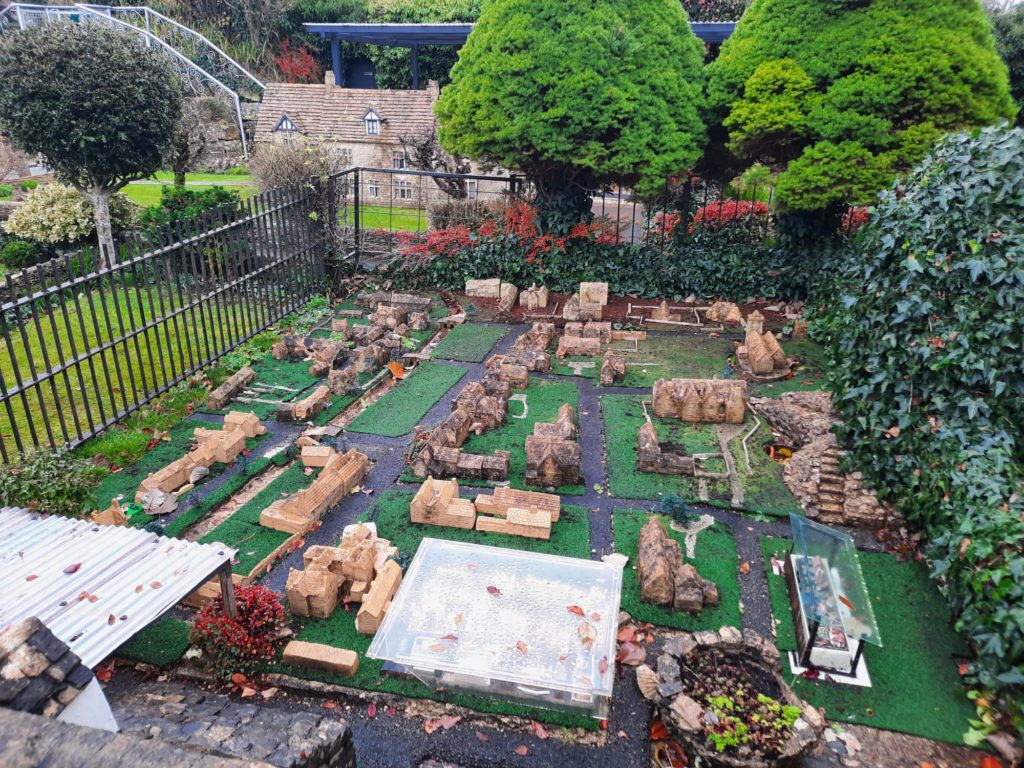

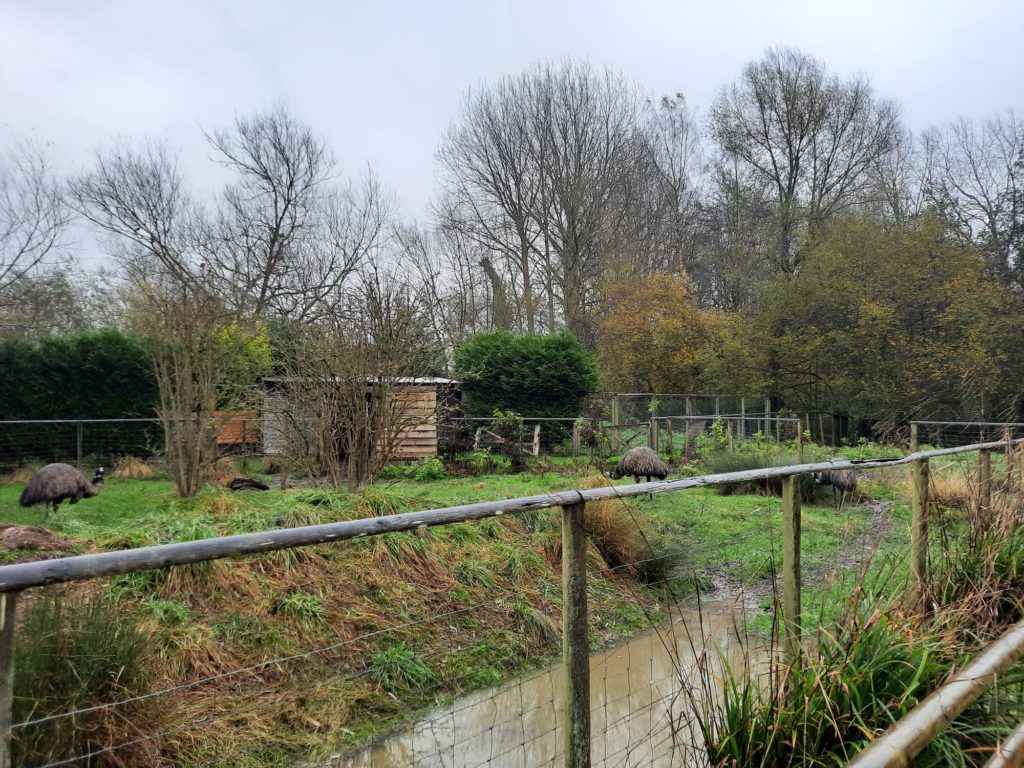
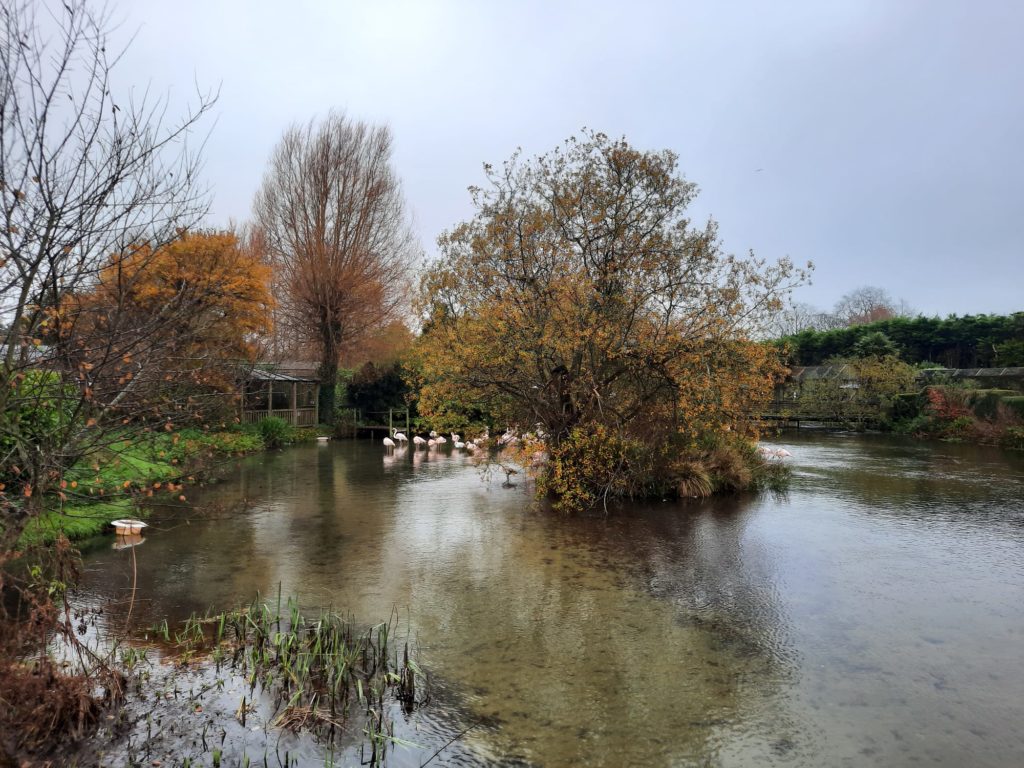
Historic Tourist Attractions
As I visited these various charming Cotswold villages, I noticed something quite endearing about its tourist attractions. The homegrown origins of them tells a story, to me, of the tourism of yesteryear. I’m basing this theory particularly around two attractions in Bourton on the Water.
The first, Bourton on the Water’s Model Village, was constructed between 1936 and 1940. One of the country’s first model villages, it’s a one ninth scale model. It’s next to the Old New Inn, and exists because the inn’s owner at the time, Mr. C. A. Morris, wanted to attract motorists to his establishment. The entry price is thankfully cheap as you can’t really spend too much time here. But it’s nice to wander about, take a couple of pictures, and admire the model village within the model village within the model village.
Just down the road is Birdland. Birdland is a little later, having opened in 1957. But similar to the model village, it was initially a personal project. Len Hill, known as the ‘Penguin Millionaire’ although I haven’t been able to find out how he made his money, loved birds. So much so he opened a bird encounter attraction in the grounds of a Tudor manor house at Bourton on the Water, and also purchased some islands near the Falklands as a penguin rookery. Birdland is still going today, in a slightly different location. We visited on a cold, rainy, uninspiring day, but I imagine it would be nice in better weather when the birds have a bit more energy.
Taken together, both locations speak to me about how the rise of private vehicles is inextricably linked to tourism in the Cotswolds. This isn’t somewhere that opened up with the railways. It took families taking driving holidays to make this a place for leisure and tourism. Families who had to stop somewhere for refreshments or to stay, so why not create your own attraction as an added incentive? It probably happens in a different form today, but these sorts of trends are always easier to see in hindsight.
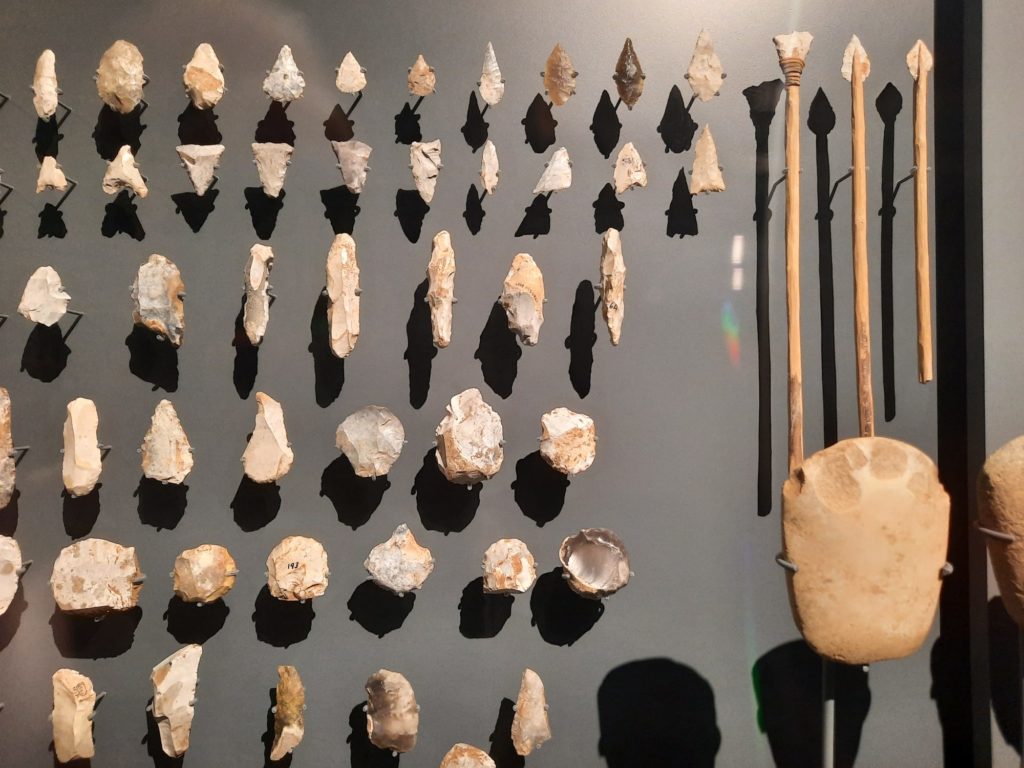
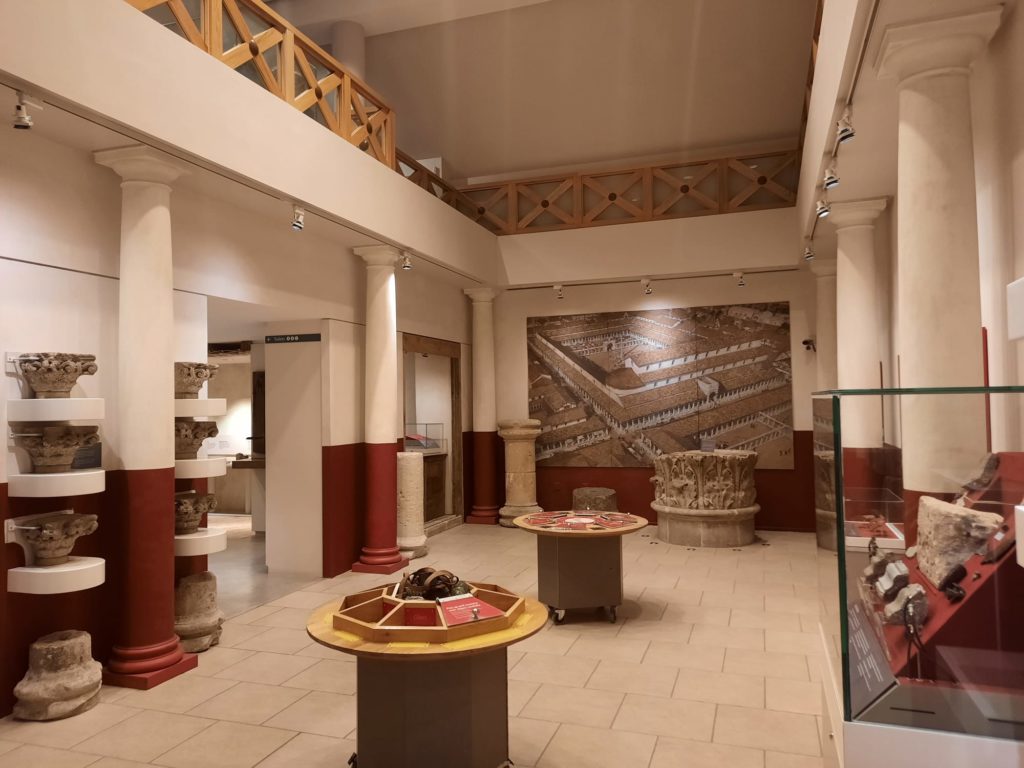
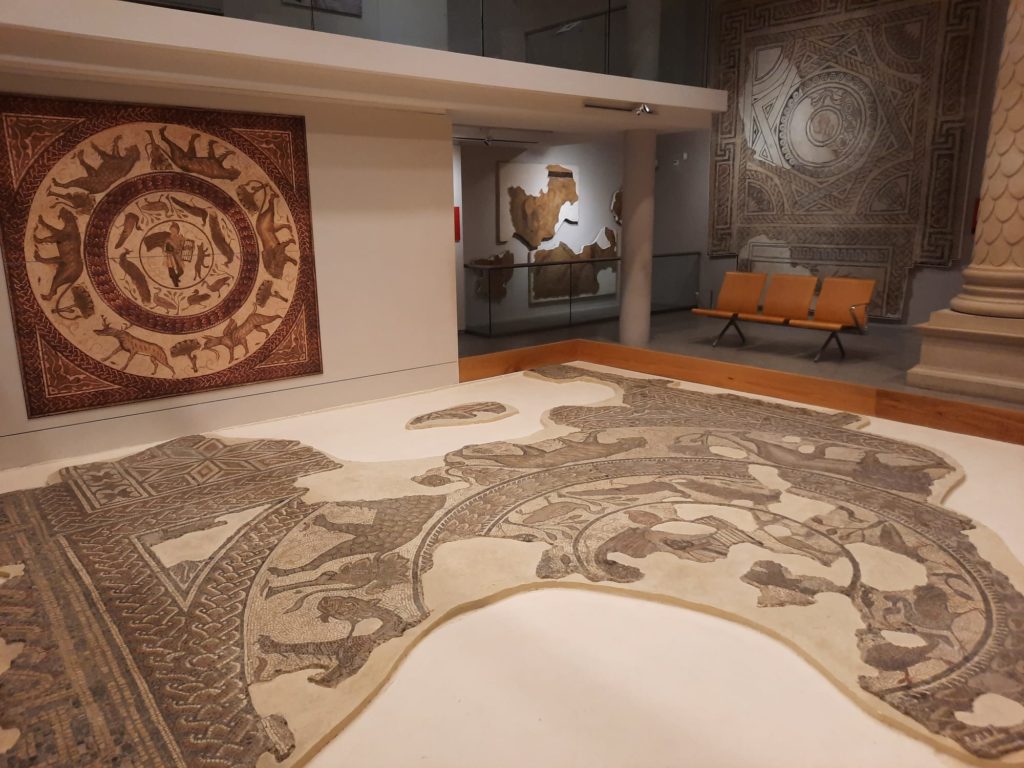
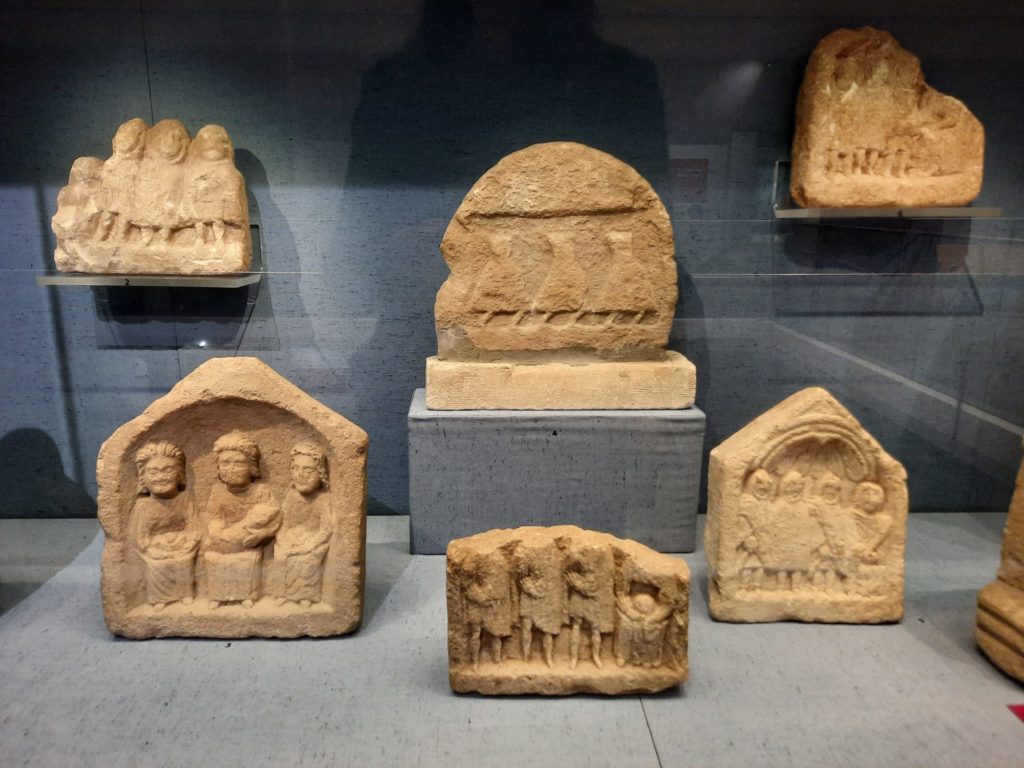
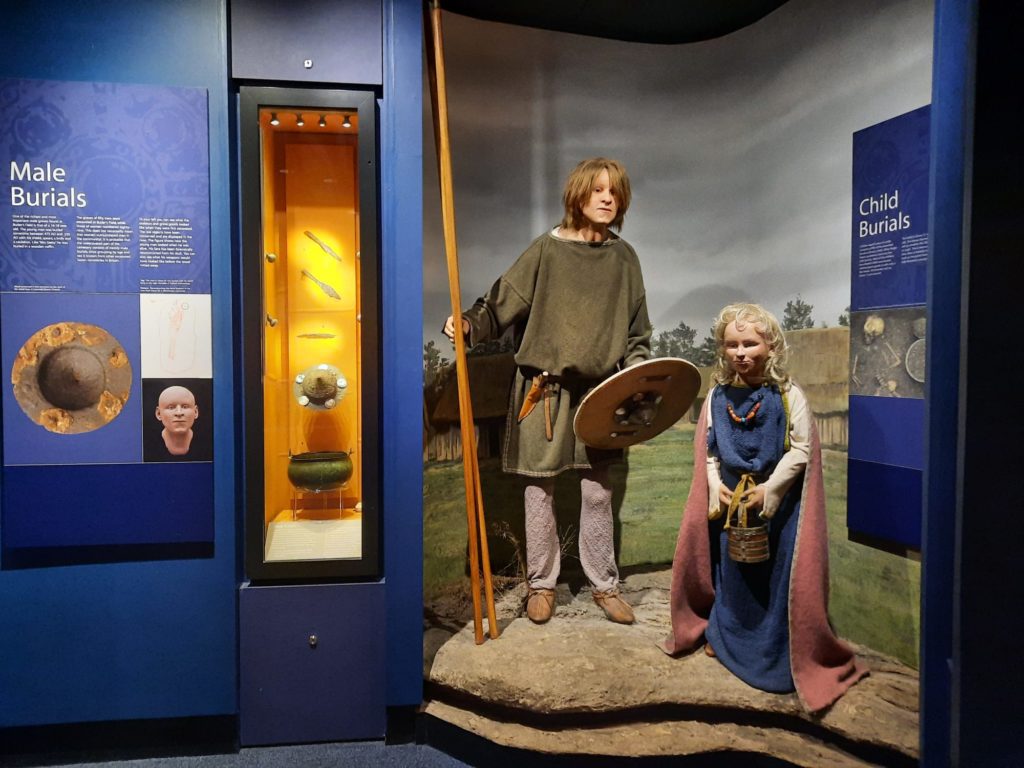
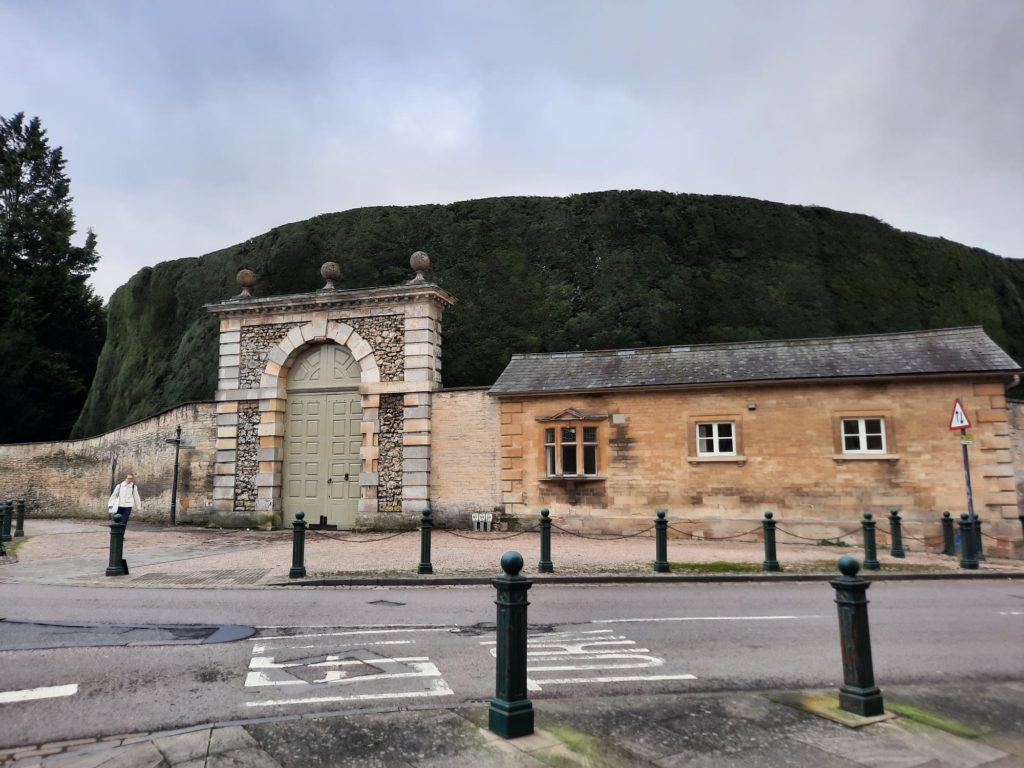
Museums And Art Collections
It wouldn’t be a Salterton Arts Review guide without at least one or two museums. On this occasion we have one museum, and one art collection in a stately home.
Both are in Cirencester, the main town in the Cotswolds. If you’re English, or have travelled in England, you may recognise that a place name ending in -cester, -caster or -chester generally means it’s Roman. Winchester, Doncaster, Exeter, Gloucester, and so on. It comes from castrum, a military camp or fort. More on ancient history shortly: my point is just that Cirencester is a location with Roman history, hence my visit to Corinium Museum. Corinium Museum does great tribute to the town’s Roman heritage, before whizzing through the subsequent centuries. But there are some great mosaics to see, as well as early Christian artefacts and other historical evidence. Set aside maybe two hours to see everything properly.
And just a block or two down the street, we saw a wonderful private art collection. Cirencester Park (the house) is home to the Earls of Bathurst. Their immense grounds (also Cirencester Park) are mostly made available to the public for free. They’ve only just started to open up the house for pre-booked guided visits. As part of this you will see behind the world’s largest yew hedge, before heading in to see paintings by Sir Thomas Lawrence, Sir Godfrey Kneller, and many other noble portraits of noble people. It’s a very rich collection and a treat to see, but will require planning well in advance.
If what I’ve already described doesn’t take your fancy, there are many more options. You could try the Cotswold Motoring Museum, Jet Age Museum, or Nature in Art. Plus there are many more fine houses and their gardens. A plethora of cultural activities, in fact.
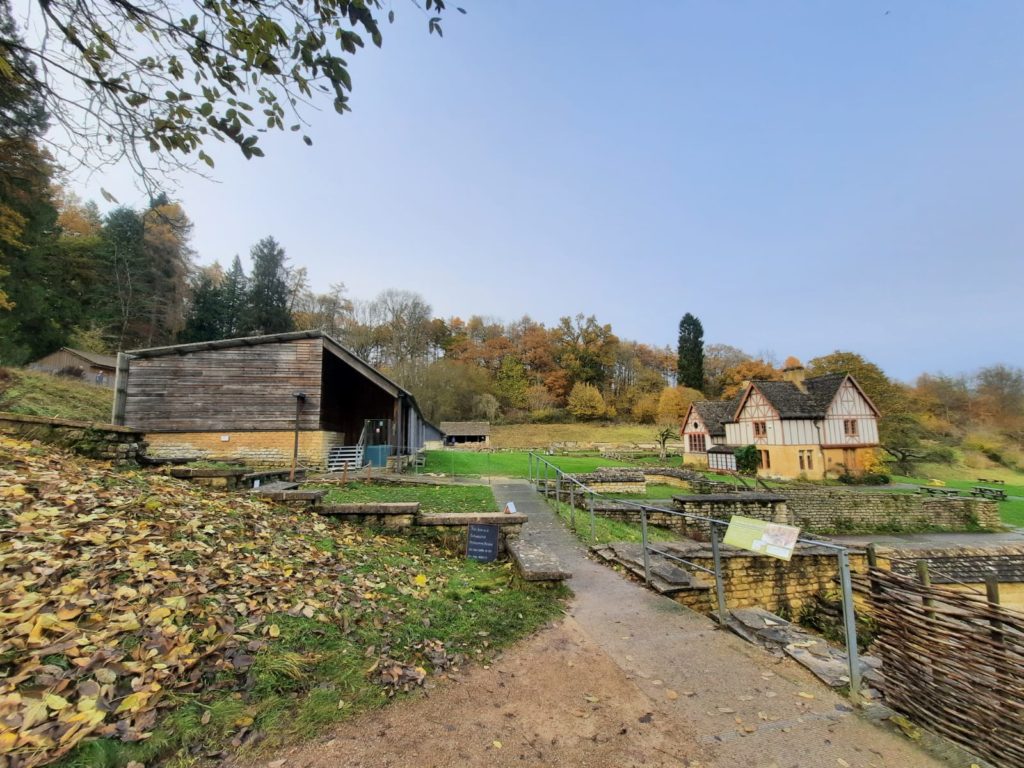
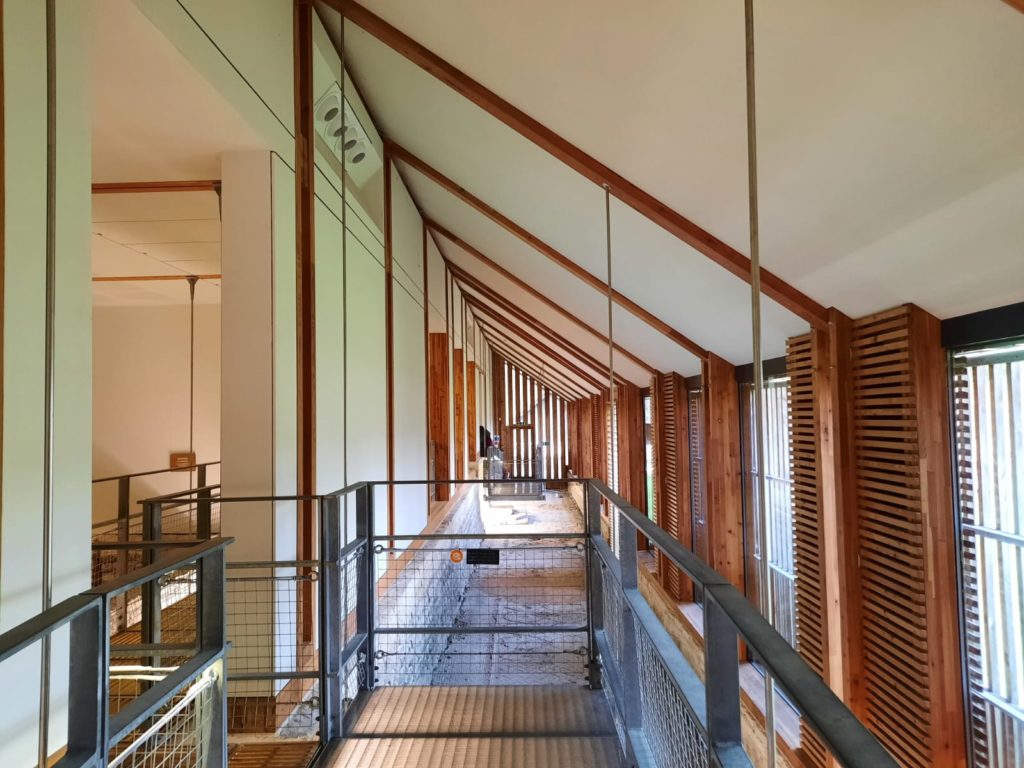
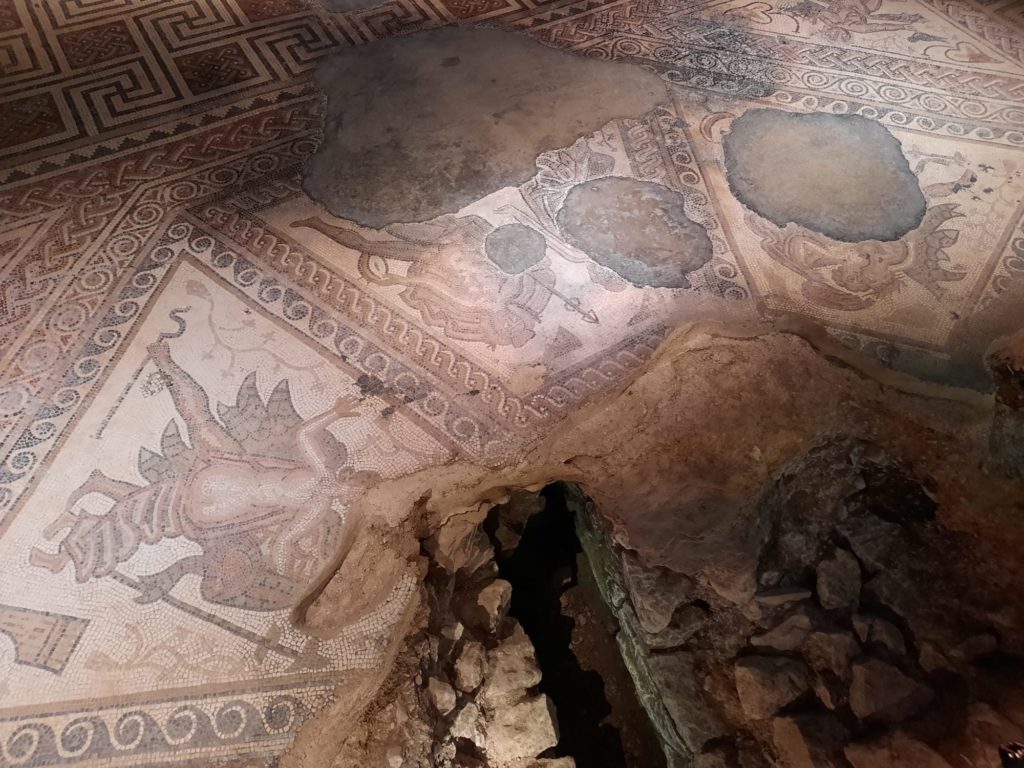
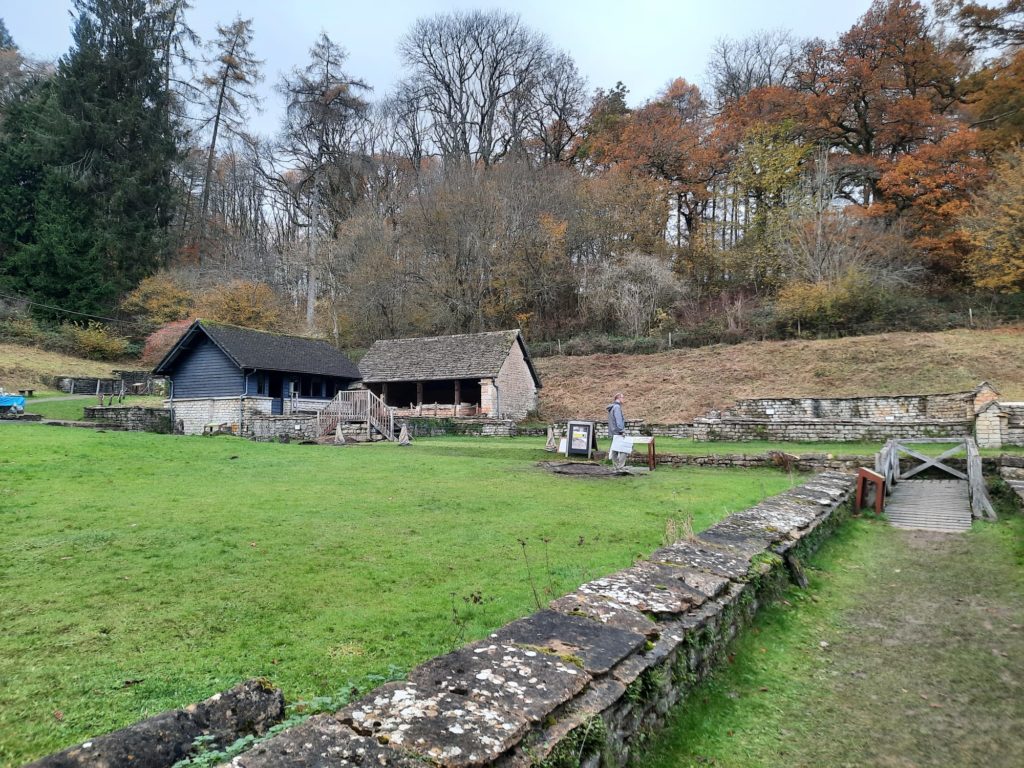

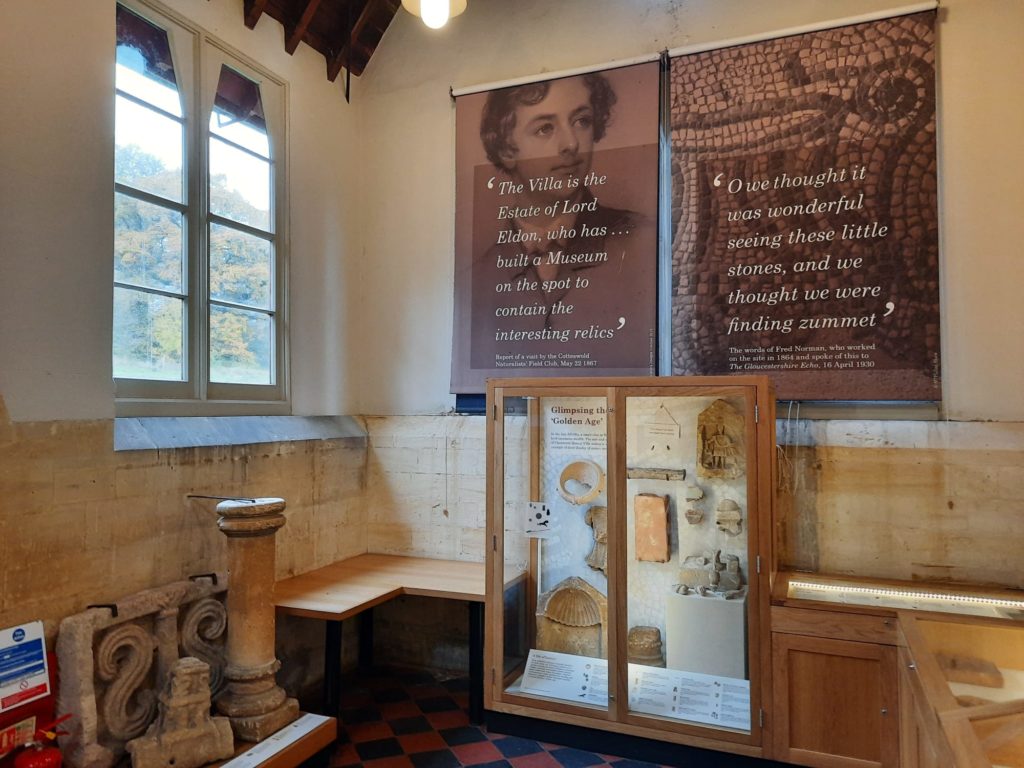
Ancient History
So as I mentioned above, there were once Romans around these parts. In fact the Cotswolds were settled long before that, around 3,500 BCE in the Neolithic period. But it’s often the Romans who have left us the best traces. During our weekend in the Cotswolds we drove to Chedworth Roman Villa to find out more.
Chedworth still benefits from a lovely pastoral setting, which helped me to understand Roman villas much better than I ever have before. We don’t know who its owner was, but know they were wealthy. The villa, situated conveniently near multiple Roman roads, had lovely mosaics and extensive heated baths. It was discovered by chance in 1864 by a gamekeeper on the grounds of Lord Eldon, whose uncle James Farrer was by chance an archaeologist. There’s a lovely little Victorian museum still in situ, as well as modern facilities and an interpretation centre over the baths.
The Corinium Museum in Cirencester gave a good overview of local Roman life, but Chedworth was much more inspiring. You can imagine visitors making their way up the hill, and servants working away to stoke the fires for baths and heating. There’s a free audio guide which is well worth listening to. In theory you can probably walk to Chedworth from somewhere or get a taxi, but realistically you will need your own transportation.
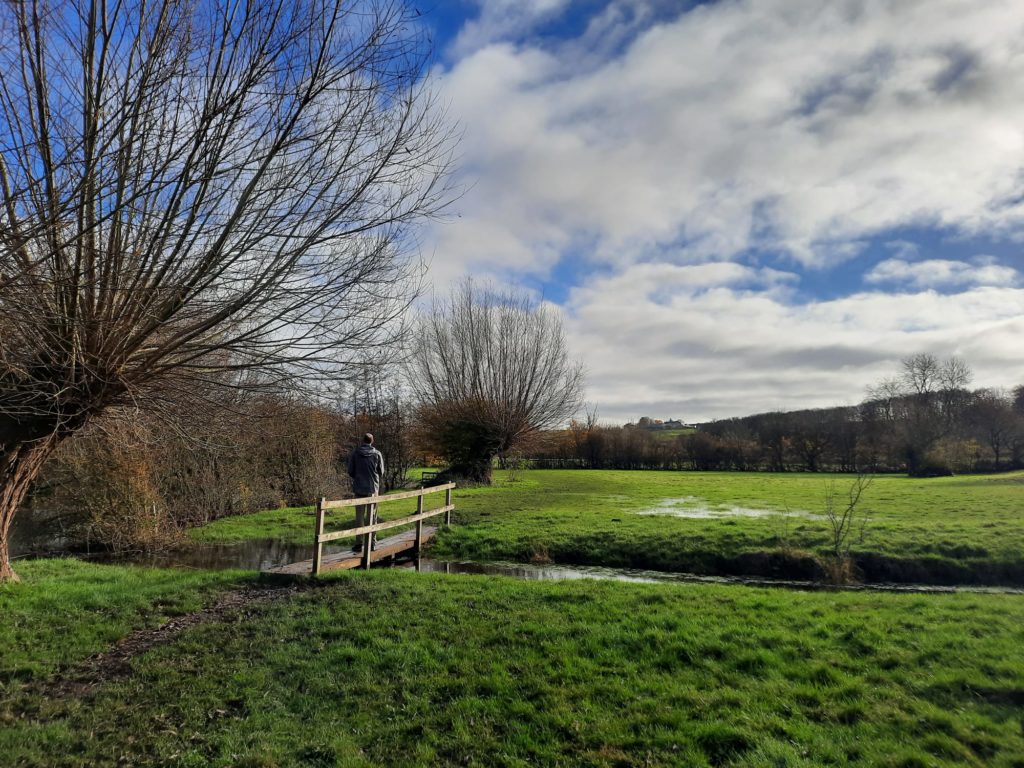
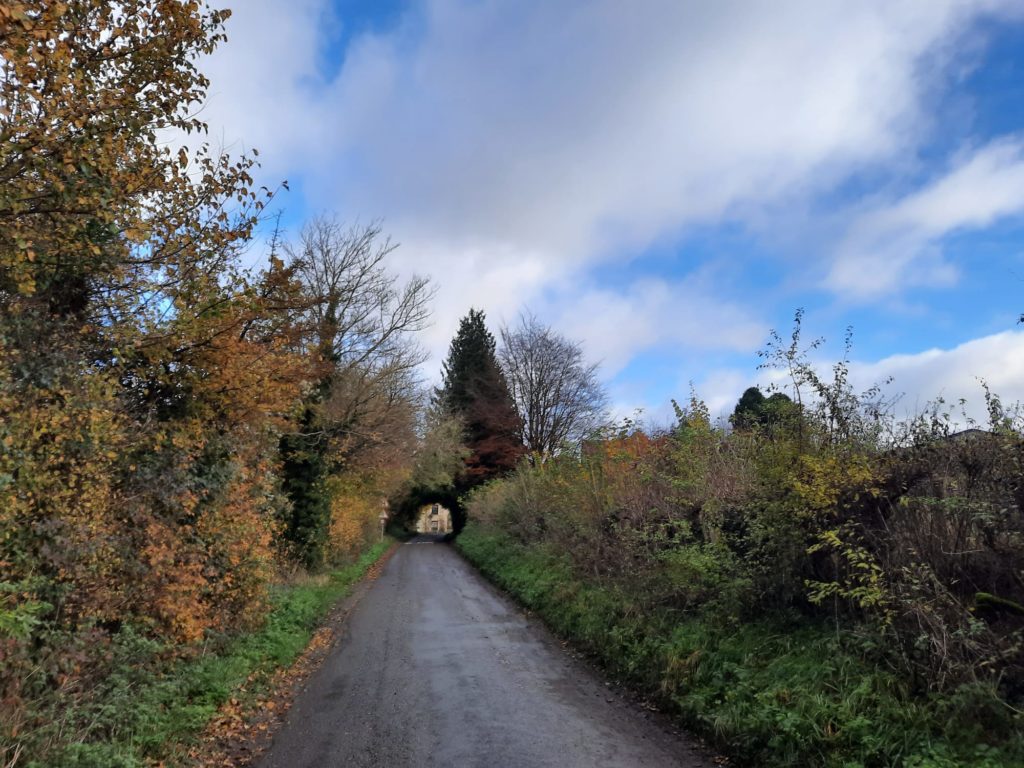
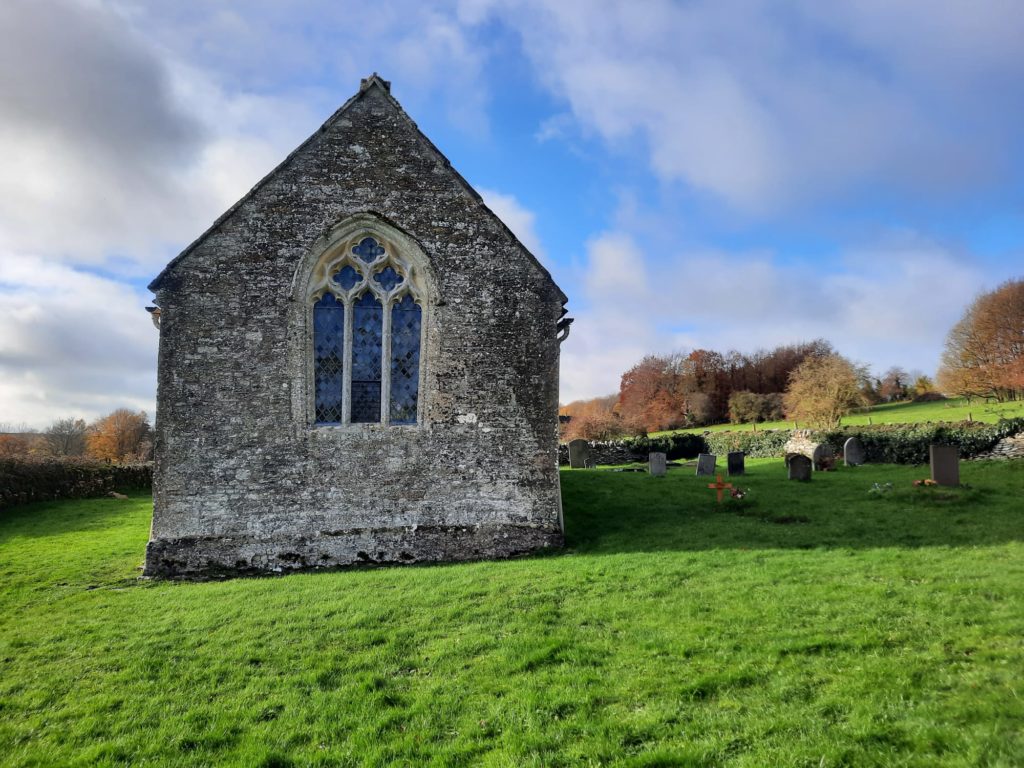
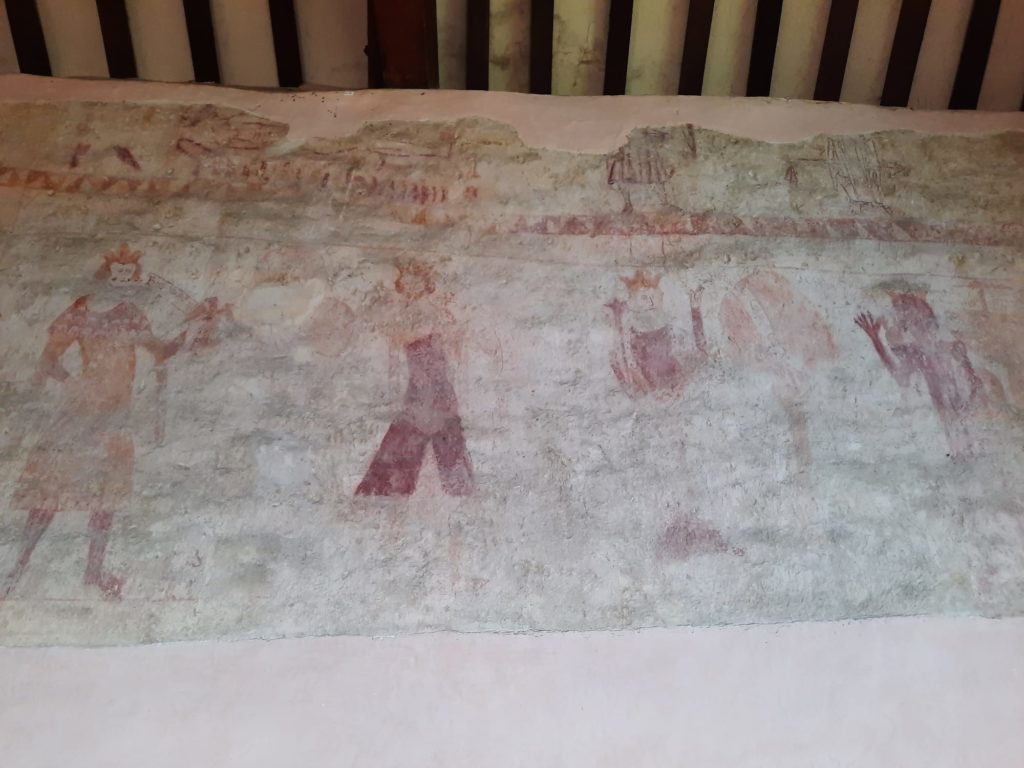
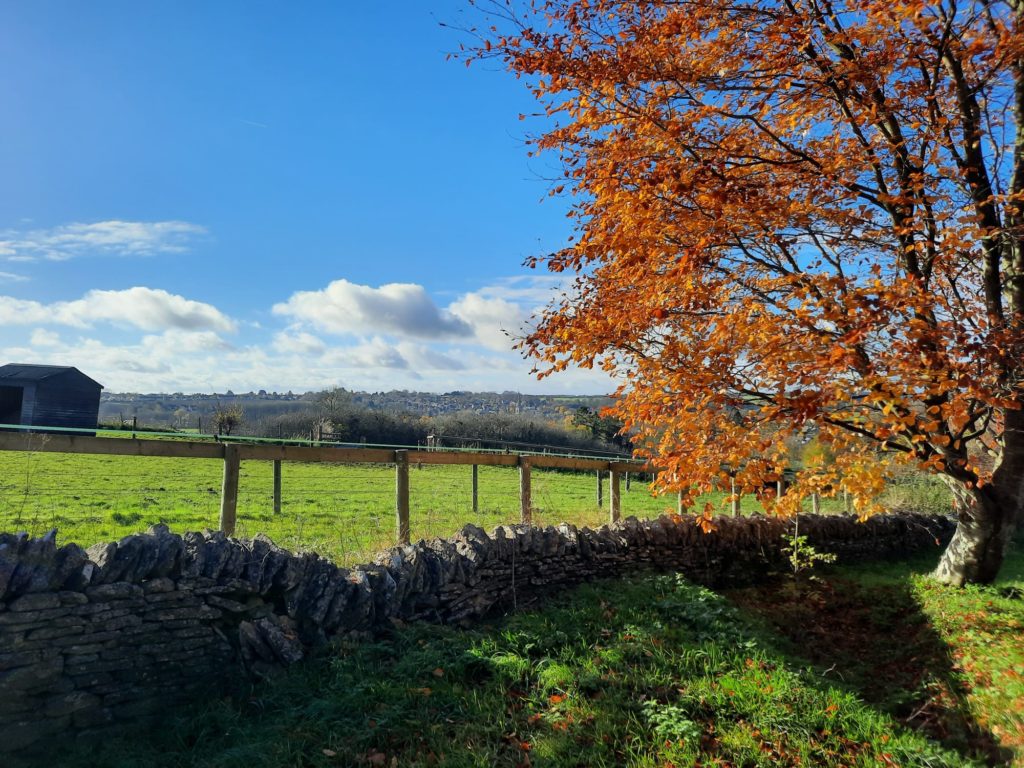
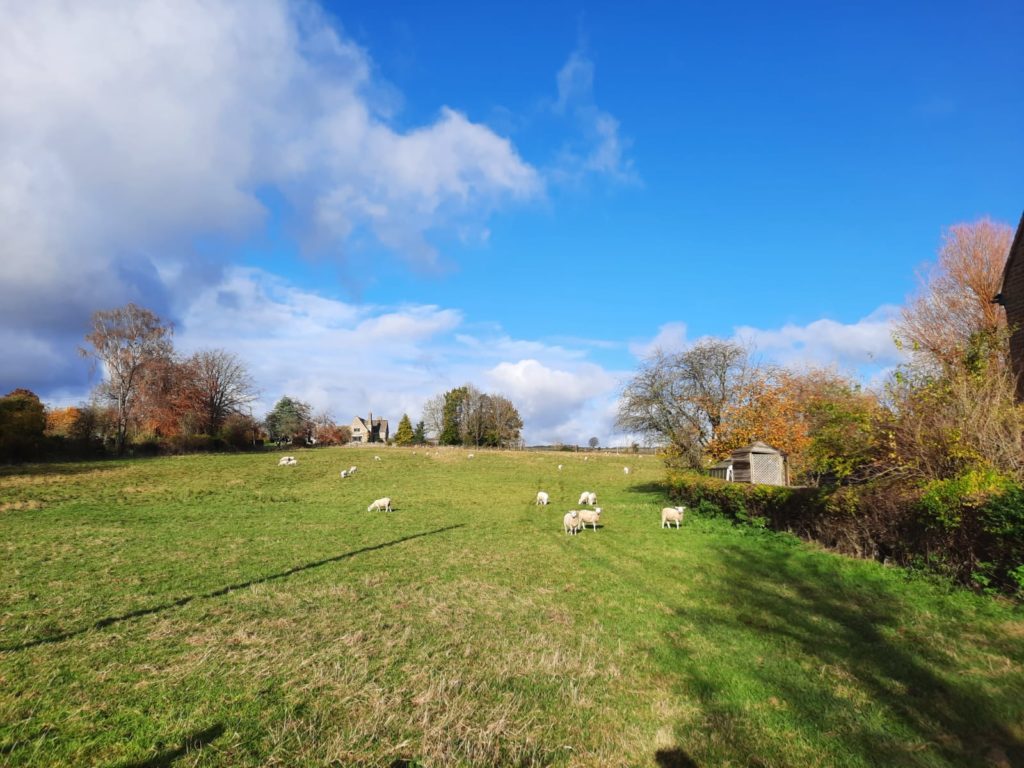
Inspiring Walks
If you’re able, getting out into the countryside for a good walk is a superb way to see more of those limestone grasslands forming the Cotswolds AONB. A friend had loaned us an excellent book of walks produced by the Ordnance Survey folks, and we chose a circular one from Burford past the lost village of Widford. Widford was once a sizeable village, but disappeared after the Black Death. Today only St Oswald’s Church remains, complete with medieval wall paintings. It’s apparently built on the site of a Roman villa or temple.
The point is that there are innumerable lovely walks in the Cotswolds, many of them with a focal point of interest but others with pleasant scenery as the main draw. If you don’t have a book you can find online guides like this one, or get a map and find your own way along public paths. A few pointers:
- Come prepared. The English weather often changes quickly, so dress appropriately and take something warmer with you. We went for our walk after a period of rain and were pleased we had hiking boots to navigate the sodden ground and deep puddles.
- As many public footpaths and bridleways in the UK take you over farms, do be aware of animals in the fields. Particularly during spring or mating seasons.
- Again, as you may be on a public footpath on private land, be respectful and take all your rubbish away with you.
- With a little extra planning, your walk can almost always take you past a lovely country pub. Maybe check ahead that they’re open, but if the weather does change this is a nice way to warm up again. And in all weathers to enjoy some post-walk refreshments.
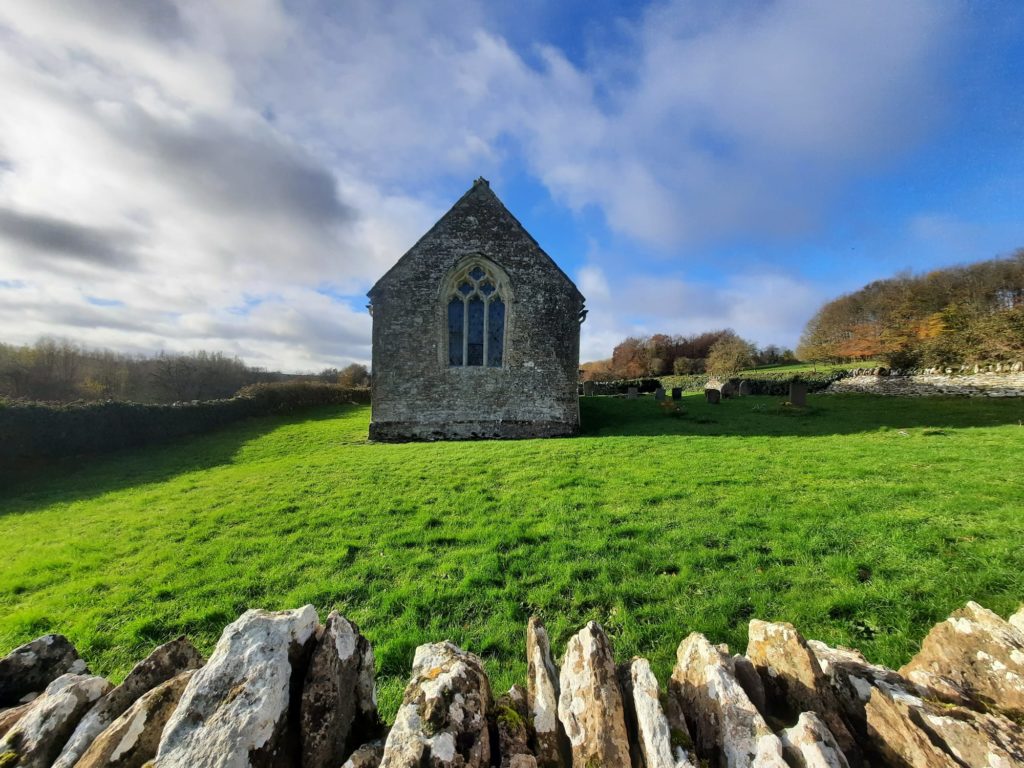
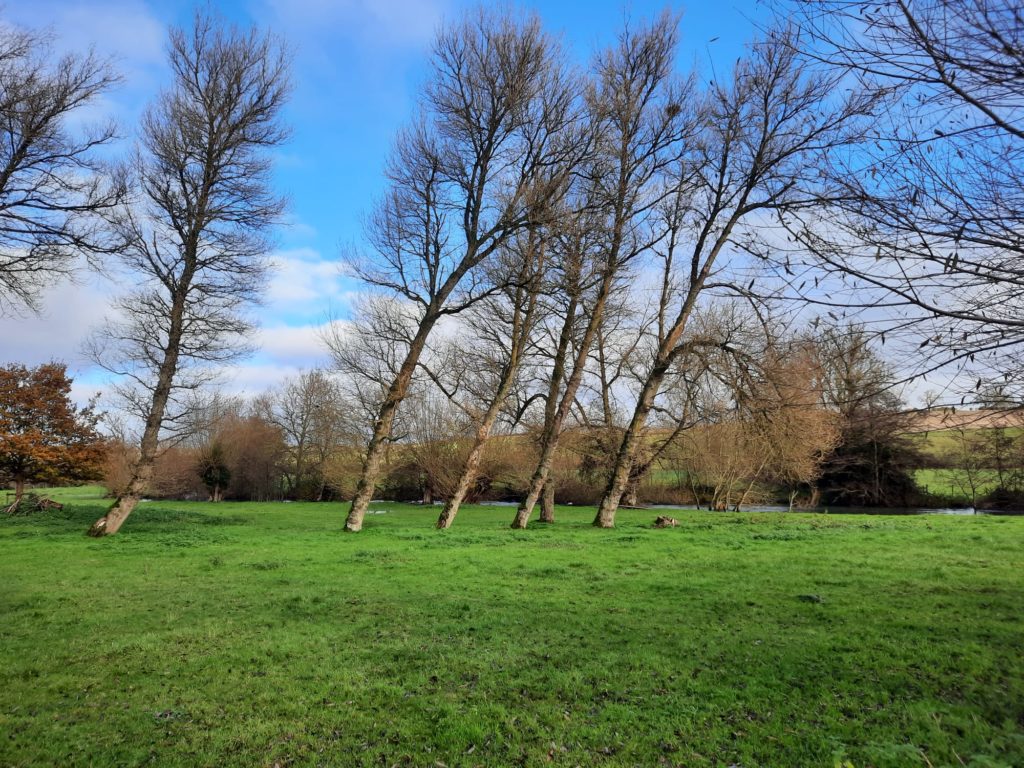
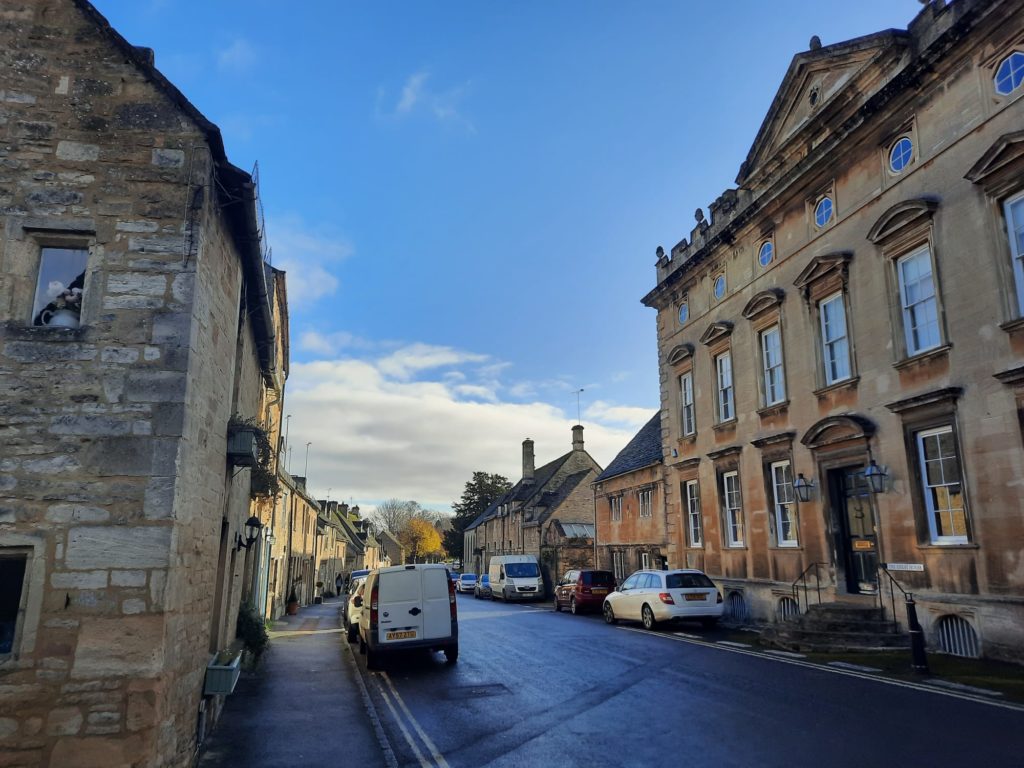
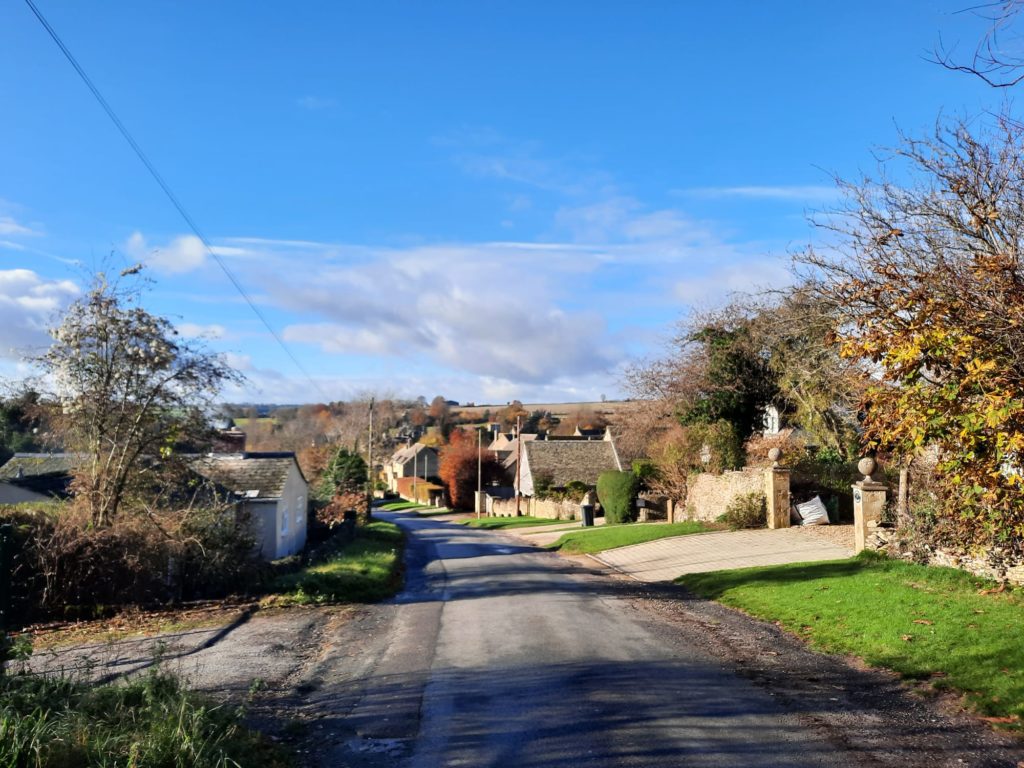
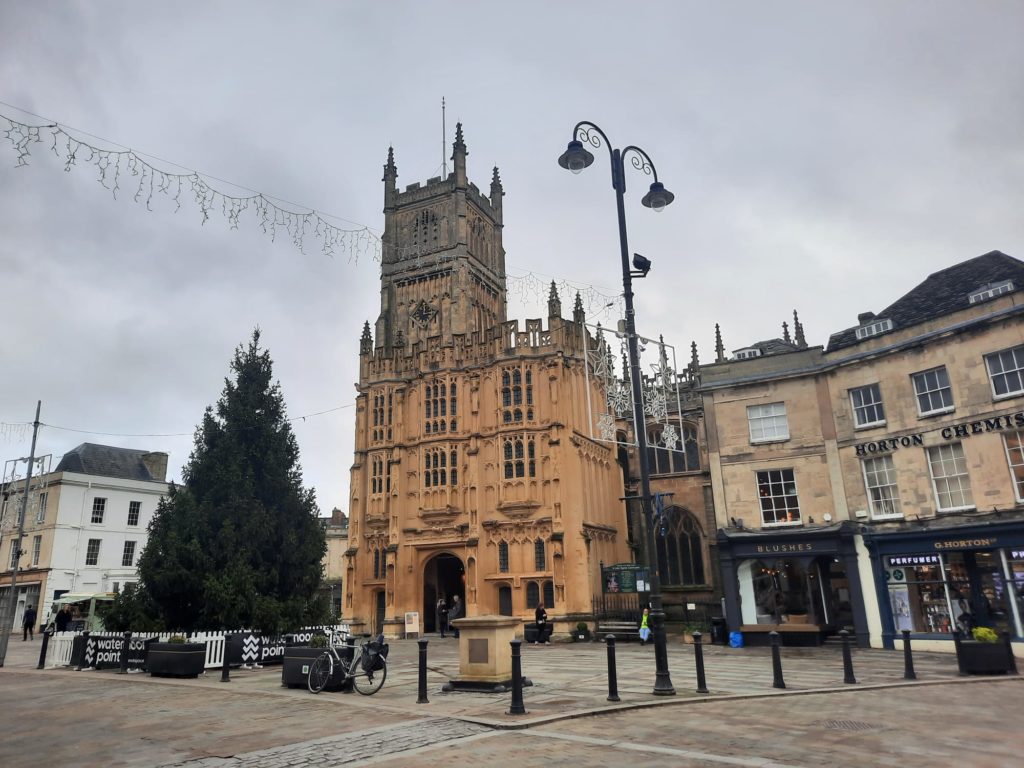
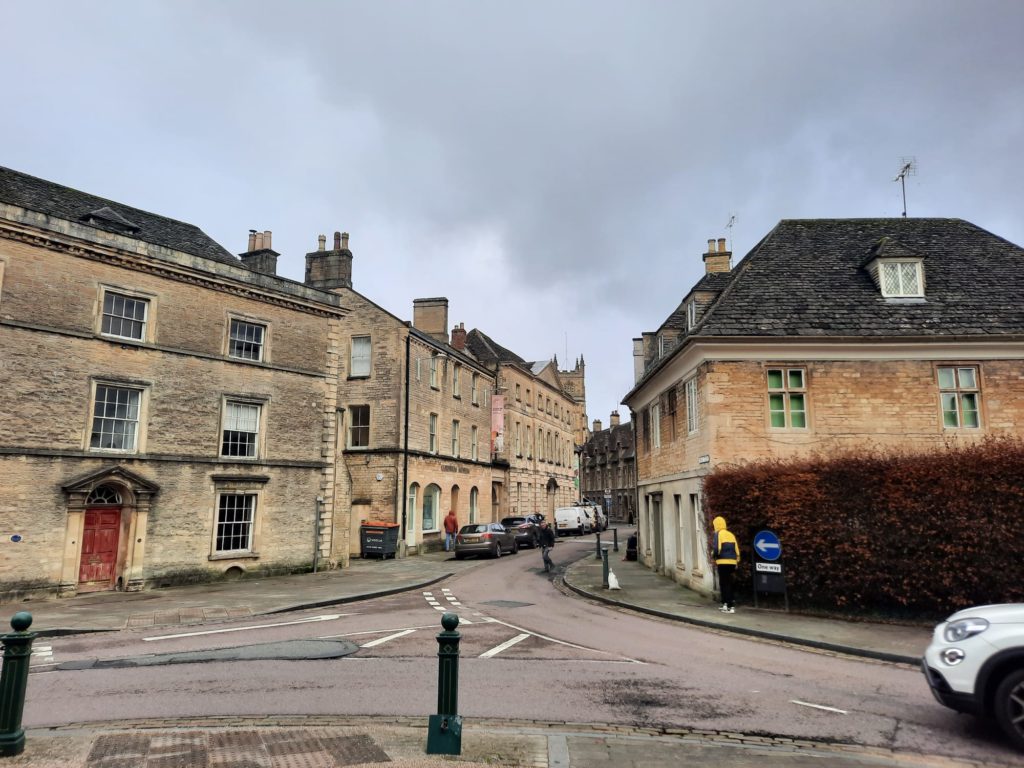
In Summary: a Weekend in the Cotswolds
So as I set out to do, hopefully I have provided some food for thought ahead of your own weekend in the Cotswolds. There are innumerable permutations you could try: a different base, time of year, destinations, or even themes. I haven’t gone into food, for instance, but I know there are some wonderful options. Or a few of the other choices I’ve briefly mentioned are antique shopping or visiting gardens like Westonbirt Arboretum. A long weekend in somewhere as rich in history as the Cotswolds only ever scratches the surface.
But in just a couple of days we enjoyed villages, walks, and pubs. Plus a model village, Birdland, museums, an art collection in a stately home, and more. Even in the off season, the Cotswolds have a lot to offer visitors. Provided you’re able to make your way around different spots to sample them, at least.
What would you add to your own weekend in the Cotswolds? Are there things I missed that I should absolutely have done? Or things you didn’t know about that have inspired you? Tell me what you think in the comments!
If you see this after your page is loaded completely, leafletJS files are missing.

